During a morning wander in the garden I notice that the steam on my cup of tea is visible again. It’s the smallest of seasonal markers, a quiet notification that the cooler air is on our heels.
The robin’s song is one of the last to be heard as the other birds take leave of their chorus and fly off to warmer climes. Suddenly the garden feels slightly emptier without their constant calls and visits to the feeder. That is until I hear a murder of crows overhead. The sounds in the air have changed along with the temperature.
Garden spiders weave their silk threads into barely there tapestries. Every now and then I see their intricate markings of brown and white dart across what looks like thin air, until the low sun transforms the invisible into shimmering strands.
This week has seen a beautiful Harvest Moon, which is the name given to the full moon that occurs nearest to the autumnal equinox. Historically the light of the Harvest Moon was said to enable farmers to work late into the night, helping them to bring in the last of the crops from the fields. Today is the Autumn Equinox in the northern hemisphere. As the Earth is tilted on its axis, it means that the sun lights the northern or southern hemisphere more depending on where the earth is during its orbit. But at two points in the year the sun lights the northern and southern hemispheres equally. These points are called the equinoxes.1 It feels like the earth is standing still for 24 hours, a pause before it continues its cycle towards the colder months and the descent into winter.
After a good harvest, most of the vegetable beds are turning to mulch. The garden is drawing in and I’ve been using up the plants that are left, before anything remaining becomes compost.
In one of the beds I grew a few medicinal herbs that I used as my own apothecary to make teas, tinctures, and balms. The pollinators also loved them during summer. But now, at the end of the growing season when the plants have gone to seed and are beginning to wilt away, I’ve been harvesting the stems to make herbal smoke sticks. I then use these in offerings and rituals. At this time of year it has become something of a tradition. Gathering the herbs just before they die back for winter happens at the time of the Autumn Equinox.
I love reading about the traditional remedies and folklore of herbs. Both are fascinating to me and have undoubtedly influenced what I’ve been growing in the garden:
Rosemary: a physical and mental stimulant, antiseptic and anti-microbial, warming, restorative, boosts circulation and helps mental clarity. Associated with remembrance, mourning and longevity and also with marriage and fidelity.
Mallow: anti-inflammatory, expectorant, soothes irritation on skin and calms mucous membranes. It is thought that Celtic tribes placed flat seed disks from mallow plants over the eyes of dead bodies, believing they would prevent evil spirits from entering. Also thought to be an aphrodisiac in Roman times.
Angelica: an aromatic bitter plant, digestive tonic and menstrual tonic. Thought to be protective against curses and unwanted spells. Placing it over doors and windows of a house was said to create a border where negative energy could not pass.
Evening Primrose: for hormone imbalances such as PMS and breast pain, also used for inflammatory skin conditions. Believed to bring bring shelter and protection.
Yarrow: thought to strengthen the circulatory system and heal skin wounds. Soothes inflammatory skin conditions. An astringent and a tonic for menstruation. Thought to help dissipate grief and ease stress. Also known as ‘seven year’s love’ for newlyweds, and hung above the marital bed to ensure many happy years ahead.
Wormwood: a tonic for the digestive system and anti-parasitic. Used as a love charm, and also for divination and initiation rites.
Lavender: for insomnia, stress, anxiety and skin calming. Believed to have powerful cleansing and protective properties, as well as warding off evil.
Mugwort: uplifting and soothing for the nervous system, also a menstrual tonic and digestive aid. Used for protection. Also known as Mater Herbarum—the mother of all herbs. A Dream-keeper, thought to enhance intuition and divination. A sprig hung over the doorway was believed to keep illness and evil away.
To make herbal smoke sticks, I use what I have to hand, which in the UK involves a lot of mugwort because it grows abundantly (some might say invasively) in great swathes along roadside verges and hedgerows, so it’s a good place to start. It’s also my favourite herb, so I am more than happy to use it. If you grow culinary herbs on the windowsill and you have spare, you could use those just before they go past their best.
A note about the term smudging: although smoke cleansing (burning botanicals and incense for health or devotional purposes) is part of the beliefs and faiths of different groups of people, smudging is a specific practice that belongs to various North American Indigenous cultures, used as part of prayer, ceremony and sacred rites. Therefore it’s a term I don’t use. White sage is also specific to Native American cultures, who have different stories, teachings and spiritually important uses for the plant. Due to its commoditisation white sage is now over-harvested, resulting in Indigenous communities not having access to their traditional medicines. As a white European woman, none of this is my culture and therefore using the term smudging and using white sage is cultural appropriation.
With so many amazing plants on our doorstep, white sage isn’t needed. Some plants that are considered weeds—but are just ‘wild plants in the wrong place’—are ideal to use for herbal smoke sticks. If you’re not sure what you’re picking, do a bit of research to make sure you’re not collecting something poisonous, endangered or a skin irritant. But then use whatever feels most appropriate for your own needs.
How to make herbal smoke sticks
There are lots of ways to make these and they’re easy to create. This is how I choose to do mine, but it's just a guide. As well as herbs you'll need jute twine, or another natural fibre string.
Gather together your plants of choice. I like to use a combination of different herbs but these smoke sticks can be made with just one type of plant too if that’s your preference.
If the herbs are wet when gathered, gently dab dry with a clean tea towel.
I like to pick stems which are around 30cm long. The number of plant stems really depends on what you’re using. Yarrow dries down to feathery wisps whereas rosemary and evening primrose retain more structure.
Arrange the herbs into bunches with the cut ends of the stems together.
Aim for bunches which are roughly 6-7cm diameter. As the plants dry they will shrink down, so start off with slightly thicker bundles.
Give them a quick shake so any insects don’t get trapped inside, then tie together at the end, securely but not too tight.
Hang the bunches up somewhere away from damp and cold. This could be in the kitchen or in a shed in the summer.
I leave the bunches for 4-6 days until they are dry but still slightly soft and leathery, not crisp and disintegrating. I live in the UK and the early autumn indoor temperature seems to be the sweet spot.
I dry off the bunches before making them into smoke sticks so they don’t develop mildew in the centre.
Once dried, take the bunches down and remove the twine.
Cut the bunches in half then join them back together, stalks and all, to make your bundles.
Tie firmly at one end, then take the longer (ball) end of the twine and begin to wrap up and around the length of the herbs, pressing and squeezing gently as you go. Once you reach one end, loop around the top a couple of times before going back down the length of the bundle, wrapping the twine in the same way as before. You’ll end up with a criss-cross effect. Knot when you reach the bottom, where you began.
As a guide mine end up being approx 15-20 long and 4-5cm wide. But it really doesn’t matter. Aiming for symmetry, neatness and perfection here misses the point. There’s no set size, just individual preference.
The bundles will continue to shrink down a little more until they are completely dry, so you may need to tighten the twine then. Therefore don’t knot the ends too tightly.
Store somewhere dry, but avoid sealed plastic containers. As the herb bundles continue to dry the remaining moisture will need to be able to escape. I keep mine in a cupboard, away from dust but with some air circulating. This prevents mildew developing. Allow them to dry out for a further 2-3 weeks before using.
To use the smoke sticks, light the end of one of them and blow out any flames so you’re left with a gentle smoulder and a stream of smoke.
As the herb bundles burn down, the twine will also eventually burn. If the remaining herbs are coming a bit loose, you can just re-tie one end.
Once you’ve finished using the herb stick, extinguish well by immersing the lit end in cold water.
If you'd prefer not to burn these they can be buried instead, as part of an offering. As the herbs break down in the soil, so will the jute twine, returning it all to the earth. Or you can keep them as they are and use them symbolically.
If you started reading this journal recently and you would like to explore more from the archive, I’ve linked to a poem I wrote at Autumn Equinox two years ago. If you’re reading this in email click on the image of the fire below and if you reading in the app click below where it says Read More (under Facing the Dark).
Seeds Weeds and Wildflowers is a wholehearted endeavour. If you enjoy reading it and you’re in a position to support it, there’s an option to show your appreciation, by buying me a cuppa to keep this labour of love going. To do so you can click on the button below, with my deep gratitude.
Thank you for reading.
Until next time,
Jo.
https://www.rmg.co.uk/stories/topics/what-when-autumnal-equinox
Other sources: The Fragrant Pharmacy and The Fragrant Mind, both by Valerie Ann Worwood The Handmade Apothecary by Vicky Chown and Kim Walker





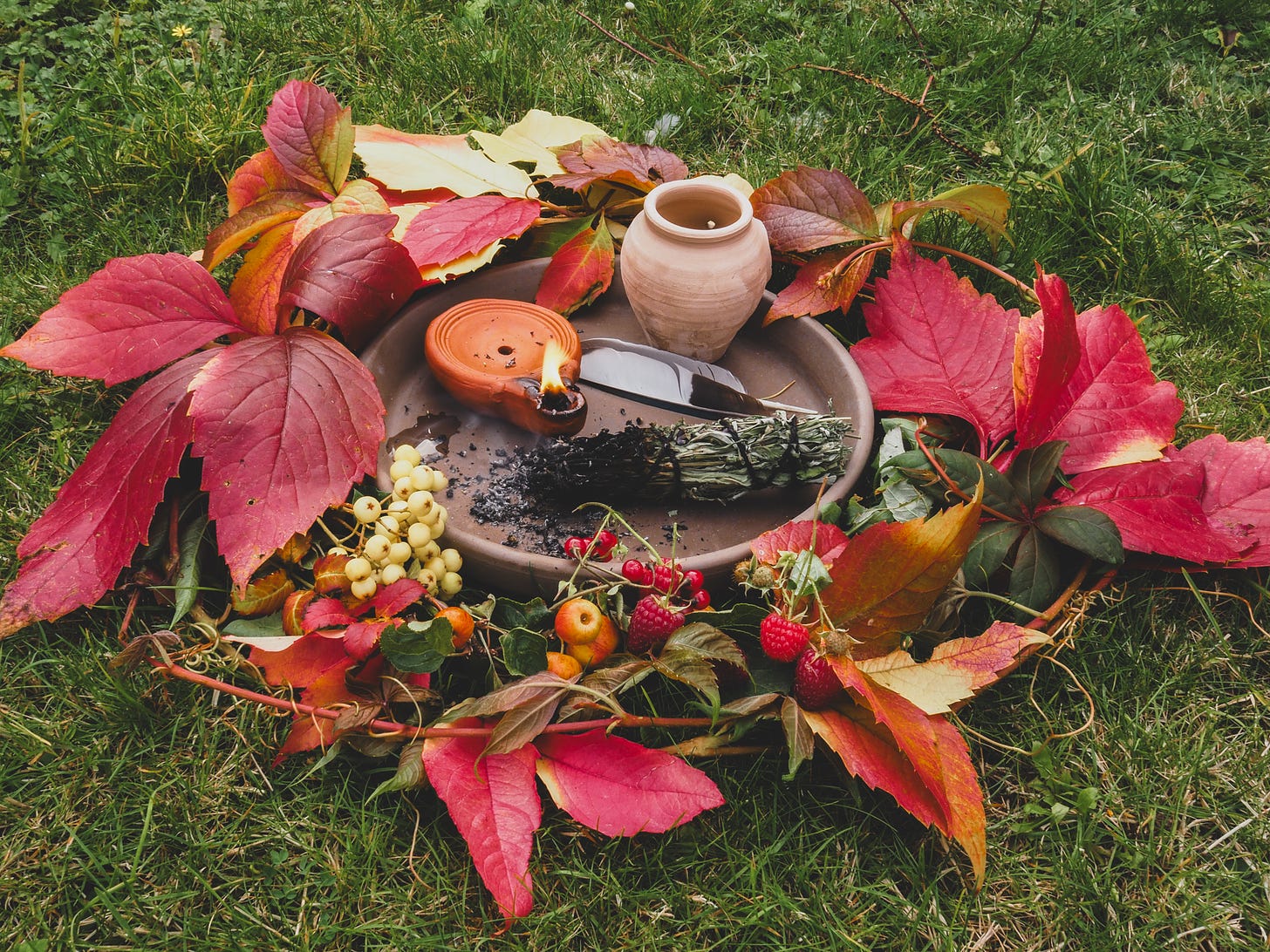
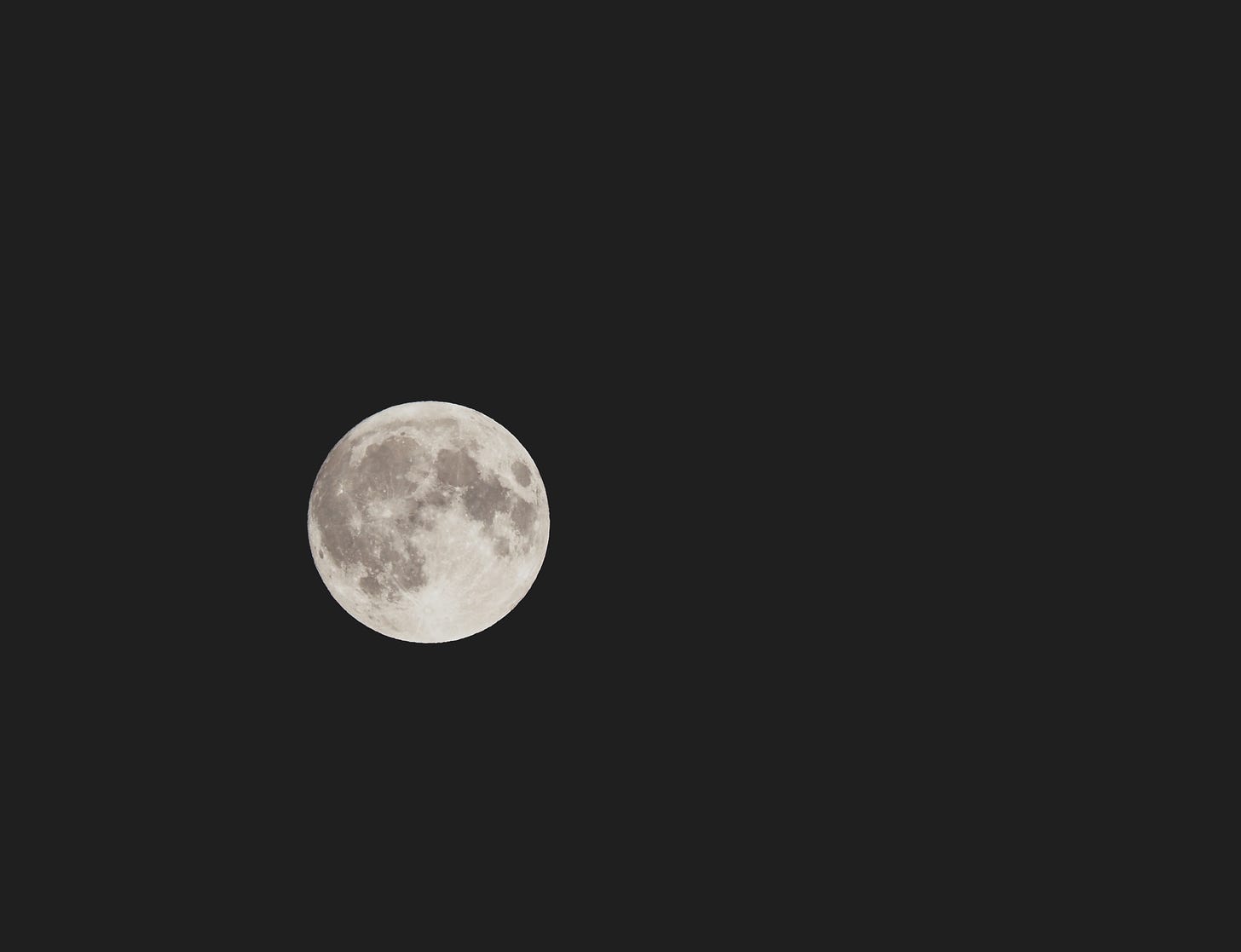
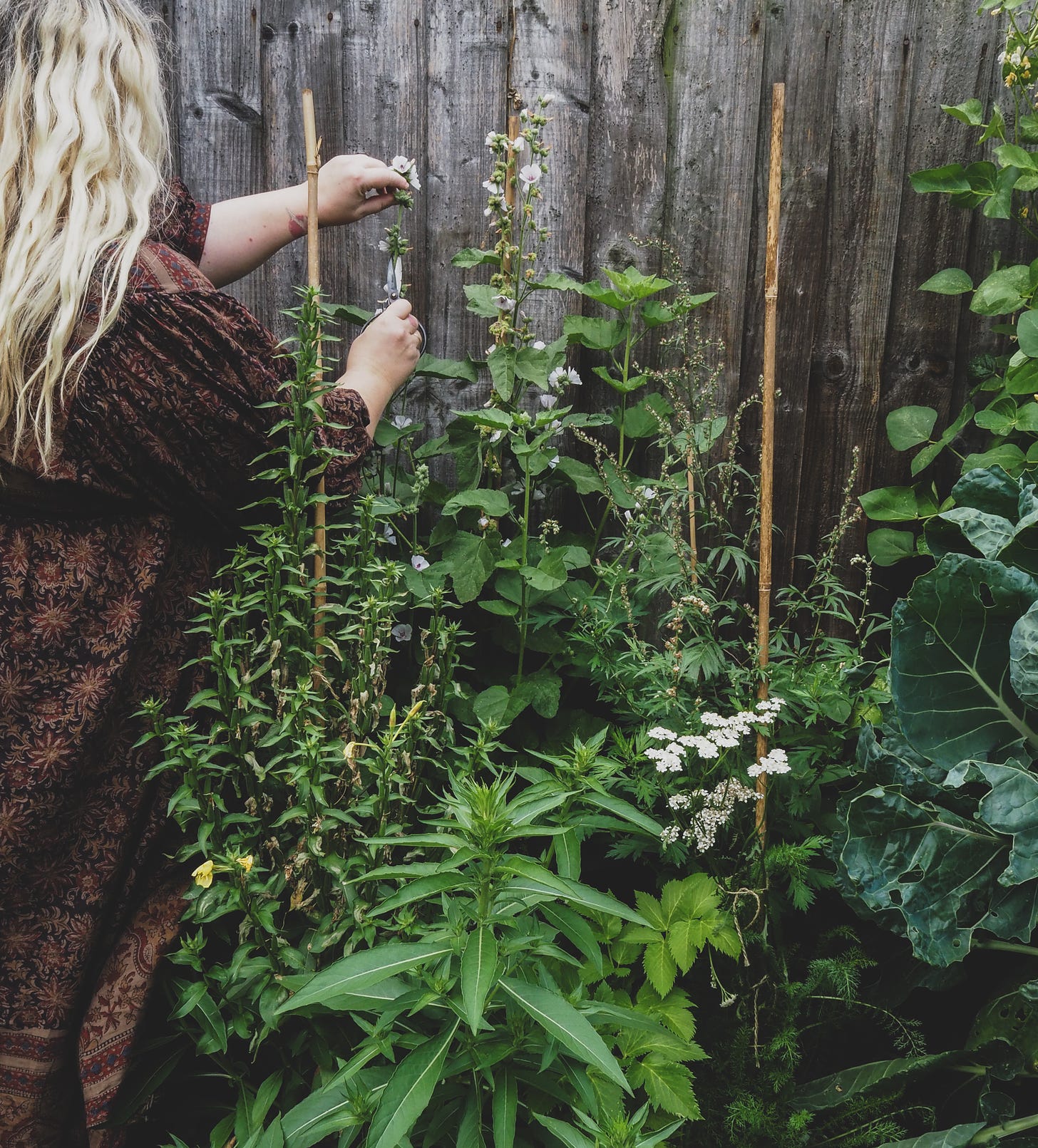
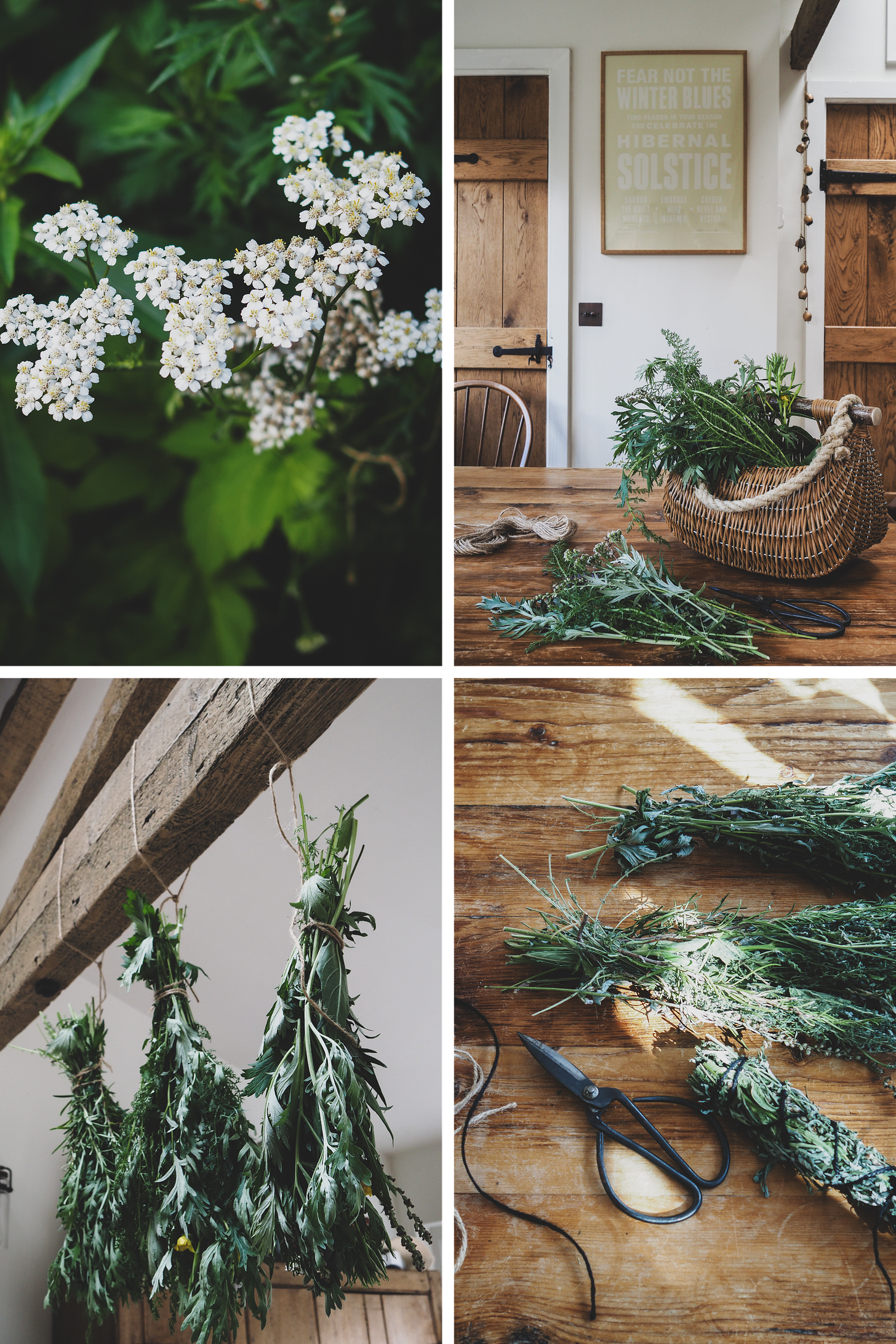
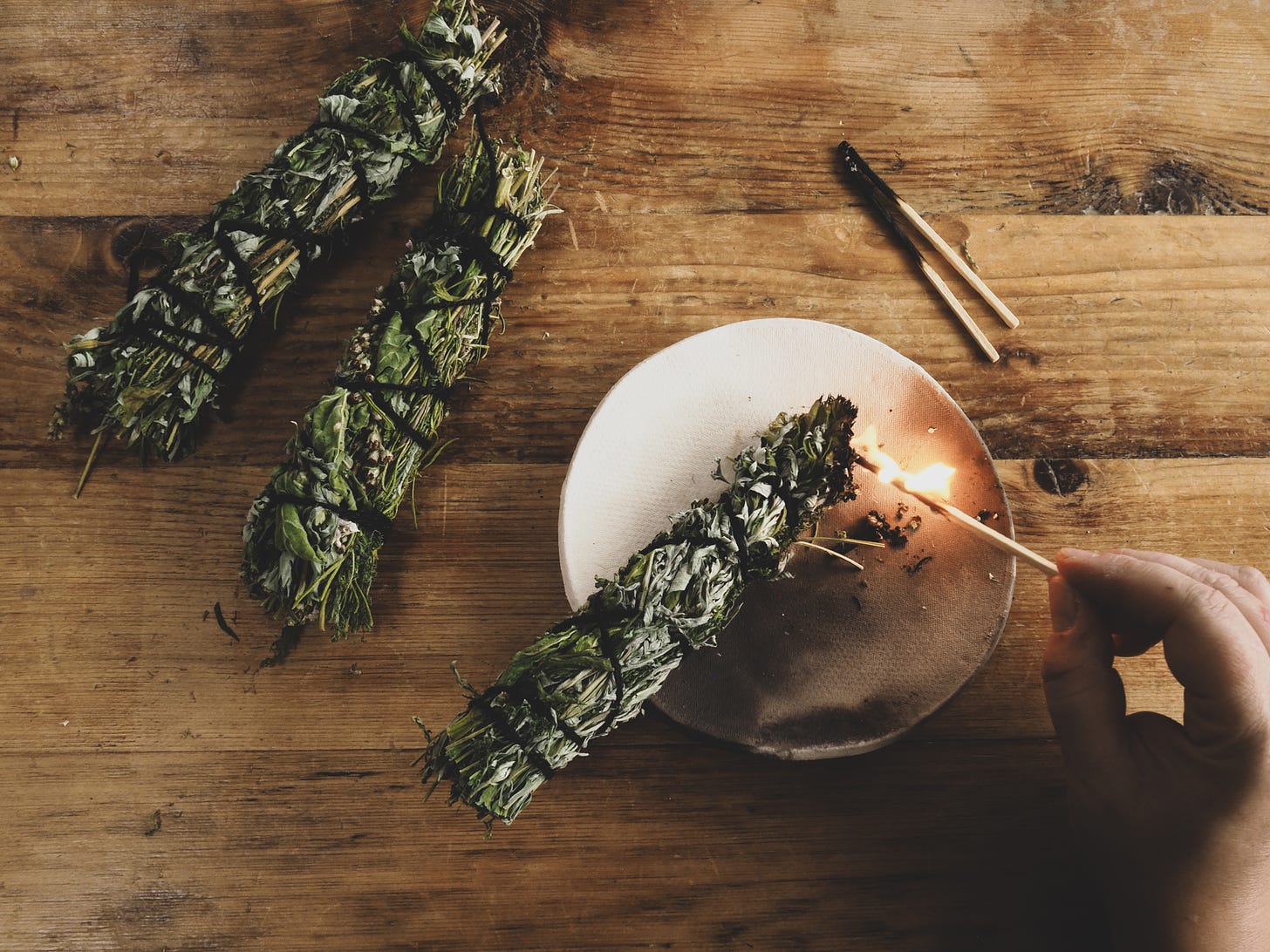

Thank you for your smoke stick tutorial, I have loads of lavender, mint and thyme this season, but am looking forward to adding much more to my medicinal and cooking herb garden next season.
The smudge sticks portion of this was very enlightening. We will try gathering some.